KAIKŌURA SURFCASTING
Words & Images by James Flett
Nestled on the east coast of the South Island, the Kaikōura coastline is worldfamous for its rich marine life and coastal heritage. Deep ocean canyons flank the Kaikōura Peninsula, bringing a wide variety of species within arm’s reach of recreational anglers. Within 20 minutes of launching your trailerboat on the south side of the peninsula, you could be targeting anything from blue cod, tarakihi and sea perch through to dwellers of the deep like hāpuku and bluenose. Sure, these fish have been a staple in the recreational fisho’s chilly bin for decades… but what if you don’t have access to a boat?
Unsurprisingly, the popularity of landbased fishing has really surged in Kaikōura over recent years. Scrape together $100 for an entry-level rod and reel, a hook and a sinker, grab some bait from the supermarket and you’re all set to head down to the beach to target tasty table fish. Gurnard, rig, kahawai and blue moki can all be targeted from the shore. This type of fishing is easily accessible for any Kiwi family, although I’ve found the biggest barrier to entry for those starting out is not knowing how to effectively target these species.
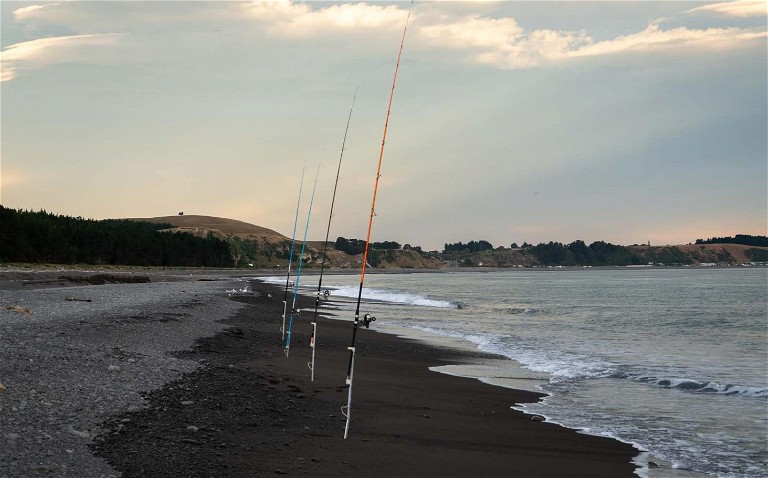
I was lucky enough to grow up pedalling my bike from our family’s bach in Kaikōura down to the beach with a collapsible rod stowed in my backpack. But back then I would only target schooling kahawai by casting a silver hex spinner or occasionally throwing a hand line with a squid-baited hook off the edge of the wharf. But after residing here in Kaikōura for the past few months, I’ve been able to spend countless hours at the beach figuring out what works and what doesn’t when fishing from the shore.
Like a lot of things in life – you get what you pay for. However, if you’re only starting out, any old surfcasting rod and reel combo will do the trick. As you spend more time working the water’s edge, upgrading to a mid-range combo will give you a noticeable step up in casting distance and the ability to fight larger species in particular. A 12-foot surf rod will give you all the distance you need to fish the Kaikōura coastline (and most of the South Island, too), but a 14-foot rod comes in handy on days when larger swells are crashing onto the beach. I prefer spooling my reels with braid for almost every method of fishing nowadays, and surfcasting is no exception. I find 30lb braid strikes the right balance between cast-ability and strength. In my opinion, the increased casting distance and line sensitivity braid offers far outweigh the extra stretch you get by sticking with monofilament fishing line, but go for whichever works for you.
The optimal rig has long been a topic of debate, but there’s no reason to make it more complex than it needs to be. And it doesn’t get much easier than the off-theshelf surfcasting rigs I’ve been using lately from the local store. With these single hook surf rigs, you simply tie your mainline to the swivel using an improved clinch knot, clip your sinker on and you’re good to go. The added benefit of these rigs is that they typically last for many sessions and you can have spare baited hooks ready to snap on as required. As my dad always told me, you can’t catch fish if your line is out of the water, so the less time your rig is on the beach, the better! I usually run a 3-4oz breakaway sinker unless stronger currents or swell necessitate one slightly heavier.
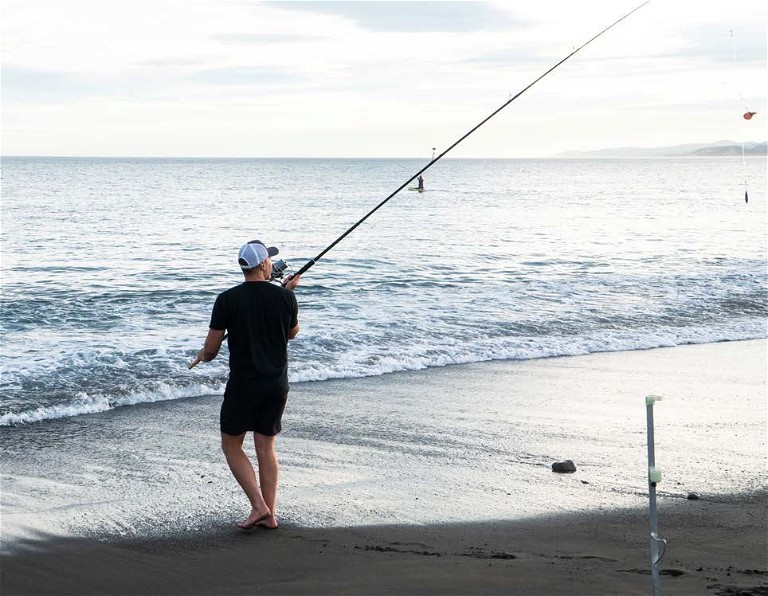
“ A 12-FOOT SURF ROD WILL GIVE YOU ALL THE DISTANCE YOU NEED TO FISH THE KAIKŌURA COASTLINE (AND MOST OF THE SOUTH ISLAND, TOO), BUT A 14-FOOT ROD COMES IN HANDY ON DAYS WHEN LARGER SWELLS ARE CRASHING ONTO THE BEACH. ”
There’s a multitude of different baits that will work on any given day depending on what fish you want to target. Crayfish is the favoured bait locally (we have found it to be the best bait for targeting rig by far) but it’s obviously not the easiest to get your hands on. Alternatively, uncooked, whole banana prawns, fresh, green-lipped mussels (both are available at the local supermarket), or smashed tuatua are all great options. No matter which one of these baits you use, be sure to wrap it very well with bait elastic to help keep it on your hook. Anywhere from 50-100 wraps will be required, depending on what brand of elastic you’re using. The ever-reliable squid is highly effective if you want to target kahawai and gurnard, especially when using a flasher rig. Your best bet to target blue moki is to use green-lipped mussels with small 3/0 hooks – separate the shells, pull the innards away from the shell and wrap this around the shank of a circle hook with elastic. Now that you’re all rigged up and ready for action, cast your line out beyond any breaking waves. When casting braid, be sure to tighten the drag fully before casting and wear a glove to avoid inadvertently slicing your finger on the line. After casting, wind in any slack line before pointing the tip of the rod towards the ground and rotating the rod tip away from the ocean in a sweeping motion until the breakaway sinker’s metal spikes bite into something solid. You may need to repeat the sweeping motion multiple times before the sinker bites in. Once set, loosen the drag enough to allow the line to feed out while keeping a little tension on the sinker spikes as you position the rod in a steel beach spike nestled somewhere above the tide line. Pull out another half metre or so of braid to give the line some freedom to move around in the surging waves, keeping the sinker spikes from pulling free (this extra line isn’t required when using mono). Readjust your drag so that there is some resistance, but the rod won’t be pulled from the spike and into the ocean when a fish bites. Now it’s simply a waiting game until a fish hooks up or your bait gets stolen. Remember to check your hooks are still baited every 30 minutes if not sooner.
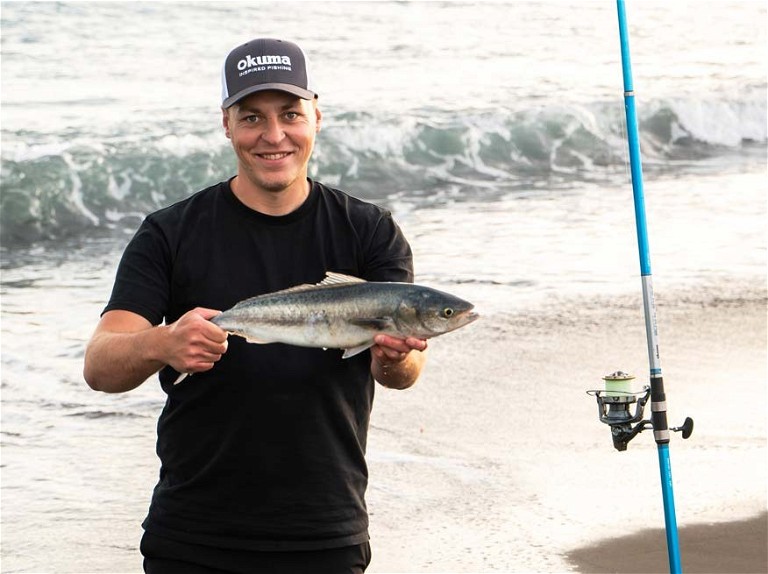
“ ONE OF THE BEST PARTS OF SURFCASTING IS THE SOCIAL ASPECT OF IT… A GREAT WAY TO GET PEOPLE STARTED WITH FISHING. ”
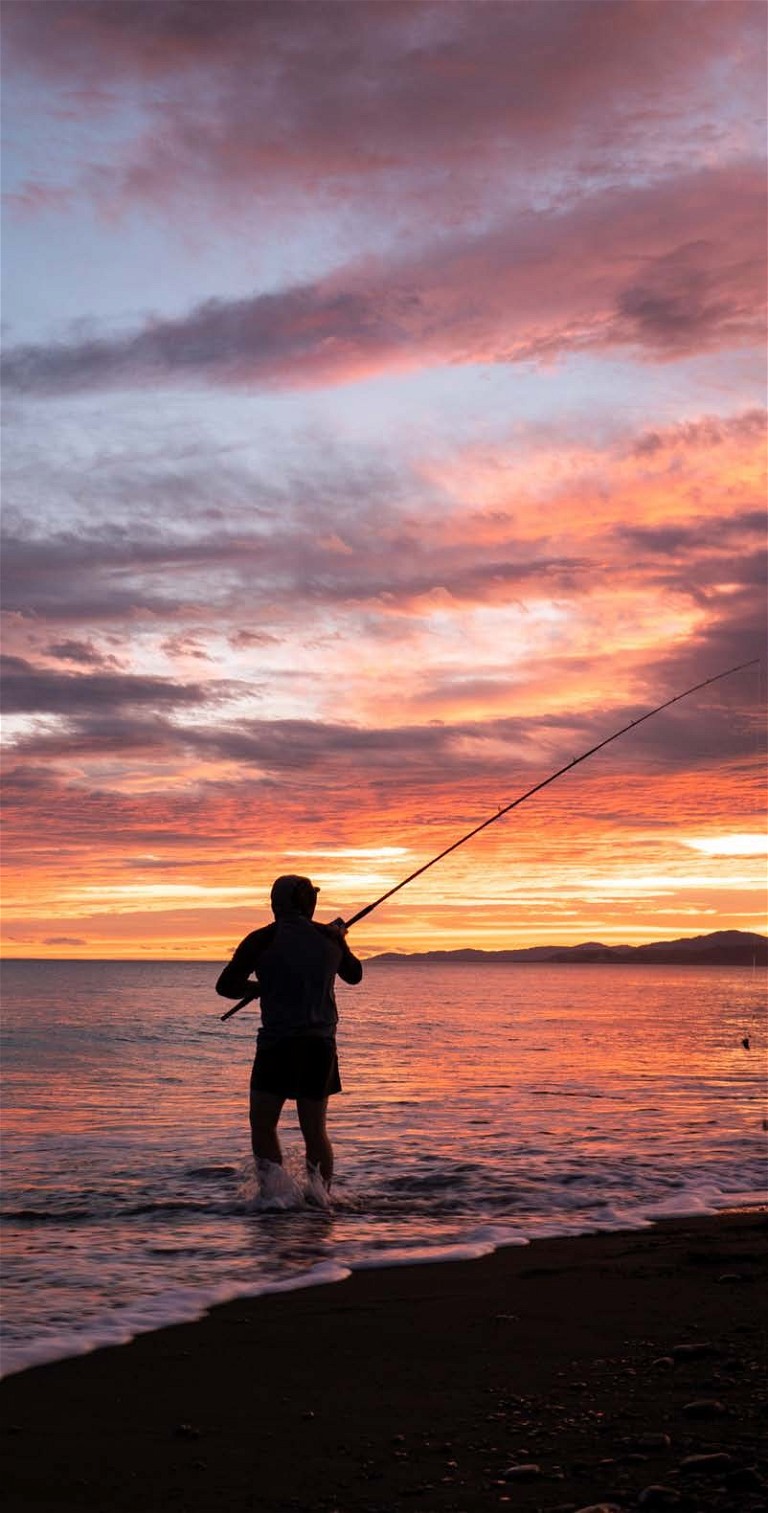
One of the best parts of surfcasting is the social aspect of it. Make it a memorable experience by inviting some friends or family and bringing some good snacks and drinks. It’s a great way to get people started with fishing.
There are a lot of nuances when targeting particular species that you can only gain through experience, but I can leave you with a few key tips I’ve learned over the last few months:
Rig don’t mind dirty water, meaning they are a great species to target when there has been recent rainfall and the water looks discoloured.
Rig are typically caught in bunches. The fishing can be quiet for hours and then you’ll catch half a dozen in 10 minutes, often just after the change of light. Fishing with a light on your rod tip is essential when fishing after dark, otherwise you can’t tell when your bait is being eaten.
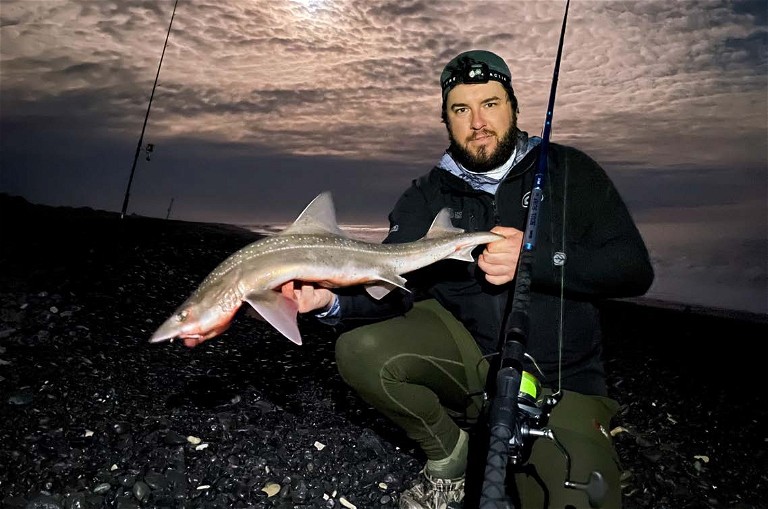
The eating quality of kahawai is so underrated in New Zealand. If it is immediately bled and put on ice straight after landing, it can be one of the best fish species for sashimi. Otherwise it is very tasty in a curry or on the grill if you prefer cooked seafood.